Mastering Door Closer Problems and Troubleshooting Guide
Our comprehensive guide details common door closer problems and provides effective troubleshooting solutions. Ensure optimal operation and longevity of your device.
Door closers are integral to many commercial and residential doors, ensuring smooth and controlled closing to prevent damage and noise. However, like any mechanical device, they may occasionally experience issues that can disrupt their functionality.
This guide provides in-depth knowledge about common door closer problems and effective troubleshooting steps to fix these issues. This information lets you maintain your door closer to peak conditions for optimal performance.
The Door Closer is Not Working.
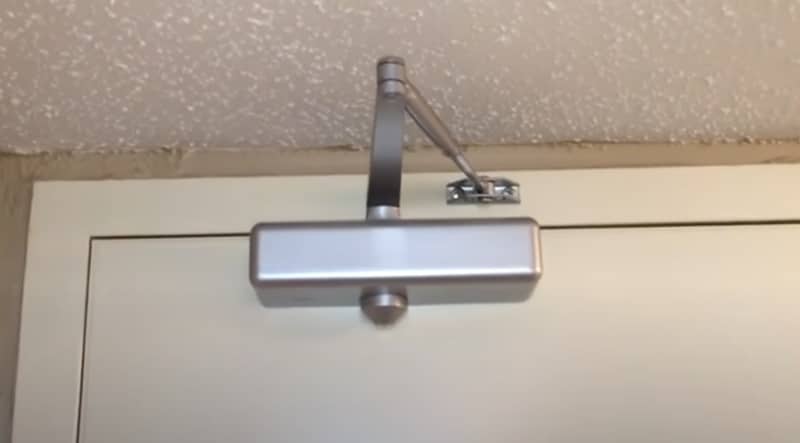
If your door closer is not working, here are some things you can try to identify and solve the problem:
- Adjust the closer: Most door closers have two valves that control the speed at which the door closes. One is for the general closing speed, and the other is for the latching speed, which controls the last few inches of closing. You can adjust these valves with a screwdriver. However, ensure not to unscrew them completely as they could come out and oil leak.
- Check the installation and settings: Ensure the door closer is installed correctly according to the manufacturer’s instructions. If it is not, it may not function properly. Also, check if the closer’s power size setting matches your door size and weight.
- Check the positioning: The door closer should be positioned correctly on the door for it to function properly. For instance, it should be mounted at the correct height and distance from the hinge side of the door.
- Check closing speed: If the door closes too fast or too slow, it might be an issue with the door closer’s speed settings. Most door closers have adjustable closing speed settings, which you can adjust using a screwdriver.
- Lubricate: Sometimes, the door closer might not work smoothly due to a lack of lubrication. Make sure it’s properly lubricated according to the manufacturer’s instructions.
- Inspect for physical damage: Look for any signs of physical damage to the door closer. If it’s damaged, it might need to be replaced.
- Leaking hydraulic fluid: Hydraulic fluid is necessary for the door closer to function smoothly. If there’s a leak, the door closer might close too quickly or may not close at all. Check for oil on the closer or the floor beneath it. If you notice a leak, the door closer likely needs to be replaced.
- Broken or worn-out spring: The spring inside the door closer can break or wear out over time, preventing the door closer from working. If the door swings freely without any resistance, the spring might be the problem. In this case, you will need to replace the door closer.
- Misalignment: If the door icloser or the door itself is not correctly aligned, the door might not close as it should. The door closer should be installed parallel to the door, and the hinges should be in good condition and properly aligned.
- Worn-out or damaged components: Over time, parts of the door closer can wear out or become damaged. For instance, the closer arm might be bent, or the screws that hold the closer in place might be loose or missing. Inspect the door closer for any visible signs of damage.
Always refer to the manufacturer’s instructions before attempting any repairs or adjustments to your door closer. If you’re not confident in making these adjustments, it may be best to call a professional.
The door closer not closing all the way.
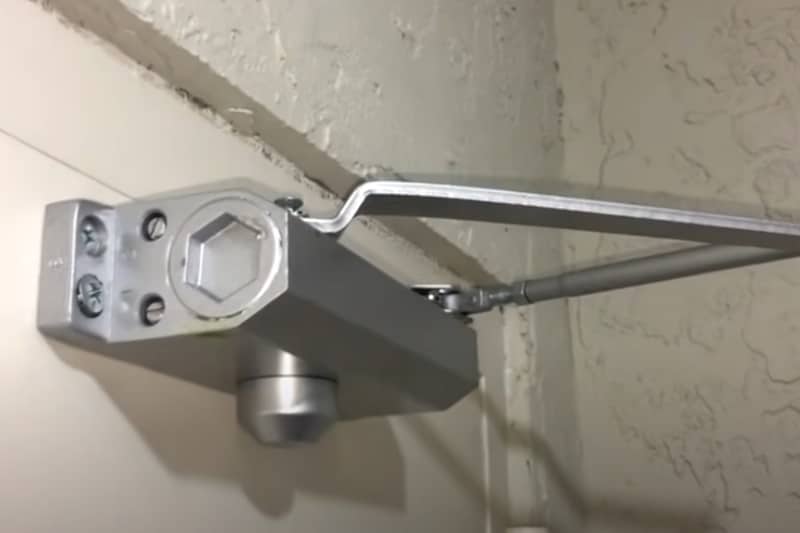
If your door closer is not closing, it could be due to several reasons. Let’s address each of the potential issues you’ve mentioned:
- Door Closer Is Undersized: The size and weight of the door dictate the size of the door closer you need. If the door closer is too small for the door, it won’t be able to close the door effectively. You may need to replace the door closer with the appropriate size for your door.
- Main Closing Speed (Sweep) Is Not Adjusted Properly: There are usually two-speed adjustment valves on a door closer: the sweep speed (which controls the general closing speed) and the latch speed (which controls the speed for the last few inches of closing). The door may not close completely if the sweep speed is too slow. You can adjust this speed with a screwdriver, turning the screw clockwise to increase the speed and counterclockwise to decrease it.
- Latch Speed Is Not Adjusted Properly: If the latch speed is too fast, the door may slam shut, and if it’s too slow, it may not latch properly. Adjust the latch speed using the same method described above but on the latch speed valve.
- HVAC Wind or Stack Pressure: If the building has significant air pressure due to the HVAC system or the ‘stack effect’ (where warm air rises, creating pressure differentials), it could prevent the door from closing. You might need to adjust the HVAC settings or install a more powerful door closer.
- Door, Frame, or Hardware Needs Adjustment: If the door, frame, or hardware (like hinges) is not aligned properly or is damaged, it could prevent the door closer from working properly. Inspect these components and make necessary adjustments or replacements.
- Spring Tension: If the spring tension is too low, the closer may not close the door fully. You can try to increase the spring tension, but be careful not to set it too high, as this can make the door difficult to open.
- Lack of Hydraulic Fluid: If the door closer is leaking hydraulic fluid, it may not be able to control the closing of the door effectively. In this case, the closer likely needs to be replaced.
- Arm Not Connected Properly: The arm of the door closer might not be connected properly to the closer or the door. Make sure it’s attached securely at both ends.
- Obstruction: There could be an obstruction that’s preventing the door from closing. Check the door’s path for any obstacles and remove them. Also, inspect the closer and the arm for any obstructions or damage.
- Door or Hinge Problem: The problem may not be with the door closer itself but with the door or its hinges. If the door is warped or the hinges are loose or misaligned, it can prevent it from closing properly.
The door closer is not latching.
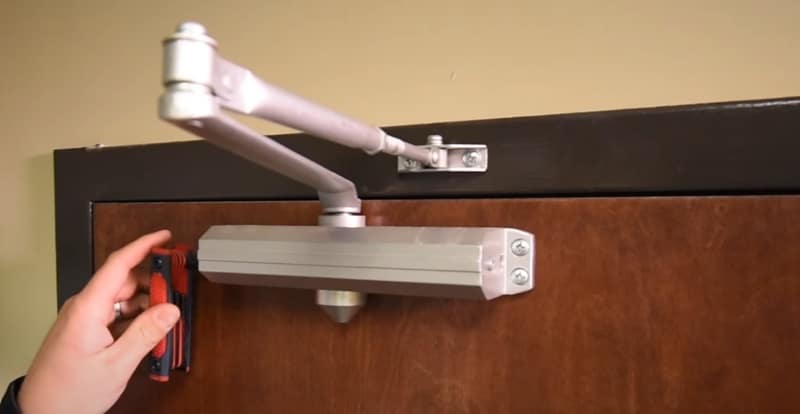
If your door closer is not latching properly, it could be due to a few reasons:
- Latch Speed Adjustment: The latch speed is the speed at which the door closes for the last few inches. If the door isn’t latching properly, the latch speed might be too fast (causing the door to slam but not latch) or too slow (not providing enough force to latch). You can adjust the latch speed with a screwdriver, turning the screw on the latch valve clockwise to increase speed and counterclockwise to decrease it.
- Incorrect Installation: If the door closer or its arm is installed incorrectly, it might not be able to provide the right amount of force to latch the door. Make sure the door closer is installed according to the manufacturer’s instructions.
- Door Alignment: If the door or its frame is misaligned, it could prevent the door from latching properly. Check the alignment of the door, the door frame, and the door closer. You might need to adjust the hinges or the door closer arm or possibly even rehang the door.
- Worn Out or Damaged Hardware: Check the door latch and strike plate for wear or damage. If the latch or strike plate is worn out or damaged, it might not be able to catch and hold the latch properly. You might need to replace these parts.
- Door Closer Power Setting: The door closer’s power setting might be set too low for the door. If there isn’t enough force to fully close the door, it won’t latch properly. Adjust the power setting according to the manufacturer’s instructions.
- Door Warping: If the door itself has warped (due to heat, moisture, or other factors), it may not be aligning correctly with the latch.
The door closer is stuck open.
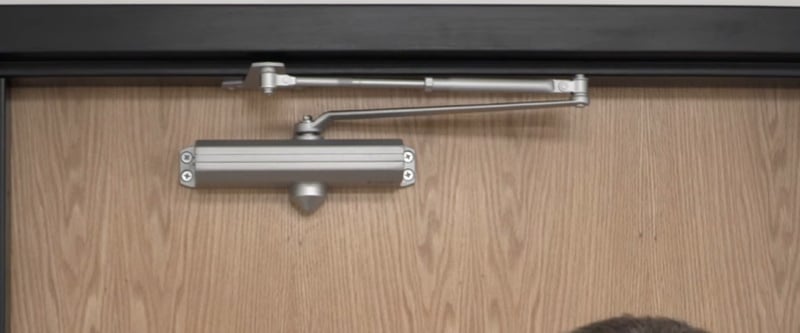
If your door closer is stuck open, here are some things you can check based on the points you’ve mentioned:
- Check The Door Closer Arm: The arm of the door closer should be moving freely. If stuck or jammed, it could prevent the door from closing. Make sure the arm isn’t bent, damaged, or obstructed in any way.
- Check The Door Spring: The spring inside the door closer is what provides the force to close the door. If the spring is broken or damaged, it might be unable to close the door. Unfortunately, if the spring is the issue, you’ll likely need to replace the entire door closer, as springs are not usually replaceable.
- Check The Bottom Of The Door: If something obstructs the bottom of the door, it could prevent it from closing. Check for any objects, debris, or damage at the bottom of the door that might be causing an issue.
- Low Hydraulic Fluid: Door closers use hydraulic fluid to control the door closing speed. If there’s a leak or the hydraulic fluid is low, it could prevent the door closer from functioning properly. If there’s a significant amount of oil around the door closer or on the ground, you’ll likely need to replace the unit.
- Broken Arm Spindle: The spindle is a crucial part of the door closer as it connects the body closer to the arm. If the spindle is broken, the door closer won’t work correctly. In this case, you’ll need to replace the door closer.
- Check The Door Hinges: If the door hinges are loose or damaged, they might prevent the door from closing. Tighten any loose screws and replace any damaged hinges.
- Look For Other Obstructions: Check for potential obstructions that might prevent the door from closing. This could include a misaligned door frame, a damaged door closer body, or even air pressure issues in the building.
The door closer making a noise.
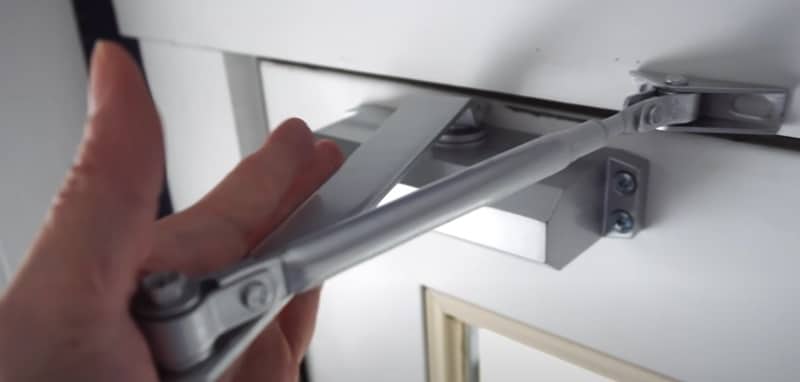
If your door closer is making noise, it could be due to a variety of issues. Here’s how you can address each of the noises you’ve mentioned:
- Clicking: This sound is normal and is caused by the one-way check valve ball inside the piston closing off the passageway to allow the fluid to pass through the regulation screw valves (sweep, latch, and backcheck and delay action). Another source of clicking could be a loose arm screw or mounting screw that holds the arm to the frame or the arm to the door closer. Tighten any loose screws to resolve this issue.
- Hissing: This sound is typically caused by the fluid passing through the valves from a high-pressure to a low-pressure area of the door closer. While this sound might be distracting, it shouldn’t affect the door’s function closer. Adjusting the spring tension or sweep speed can often quiet down the noise.
- Moaning: This noise is usually from the spring tube area of the closer and is caused by the coils of the spring rubbing against the inside of the closer. This could happen in new or old closers and if the spring is overwound or underwound. Adjusting the spring tension may or may not quiet the noise.
- Creaky Noises: These sounds could be due to a dried O-ring seal or the bearings not providing smooth action. Depending on the specific issue, you may need to replace the O-ring or the bearings.
- Popping/Knocking: This noise is often caused by a loose or worn arm, either at the pinion shaft screw or the screw holding the arm to the frame or door. Tighten any loose screws, or replace the arm if it’s worn.
- Squeaking: This sound can be fixed by lubricating the arm with a spray lubricant or grease. Only grease the closer’s arm at the frame bracket and “elbow” joints. Do not lubricate the closer pinion; the closer’s oil does this automatically.
- Farting/Gurgling: This unusual sound could be due to air bubbles in the hydraulic fluid. It could be that the door closer needs to be replaced or a leak is allowing air to get into the system. In either case, it’s probably best to consult with a professional.
The pneumatic door closer is not working.
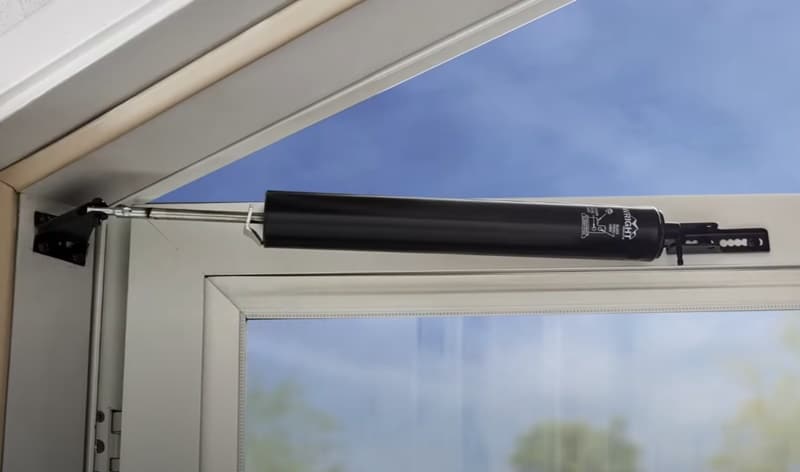
Pneumatic door closers are common on screen doors but can also be found on other doors. Here’s how to troubleshoot and fix some common issues:
- Fix a Jammed Pneumatic Door Closer: The first thing to check is if the closer is jammed. This often happens if the closer gets stuck in the “open” position. If so, you can usually pull on the door to release the closer. If it’s still stuck, you may need to remove the pin that holds the closer to the door and manually retract the closer.
- Closing Too Fast or Slow: The speed can be adjusted if the door closes too fast or too slow. There should be a screw on the end of the closer that controls the speed. Turning the screw clockwise will slow the closing speed, while turning it counterclockwise will speed it up. Adjust this until you get the desired speed.
- Fixing The Door Closer Pin: If the door isn’t closing all the way, the pin that connects the closer to the door may need to be adjusted. This pin has two settings: one for regular use and one for keeping the door open. Make sure it’s set to the regular use setting. If the pin is damaged, it may need to be replaced.
- Replacement: If none of these fixes work, the closer may need to be replaced. You can usually buy a replacement closer to a hardware store. To replace it, you’ll need to remove the old closer, typically held in place by a couple of screws. Then, install the new closer following the manufacturer’s instructions.
Remember, always be careful when working with door closers. They can create significant force, so handling them carefully is important to avoid injury. If you’re unsure about any step in the process, it may be best to consult a professional.
Hydraulic door closer hard to open.
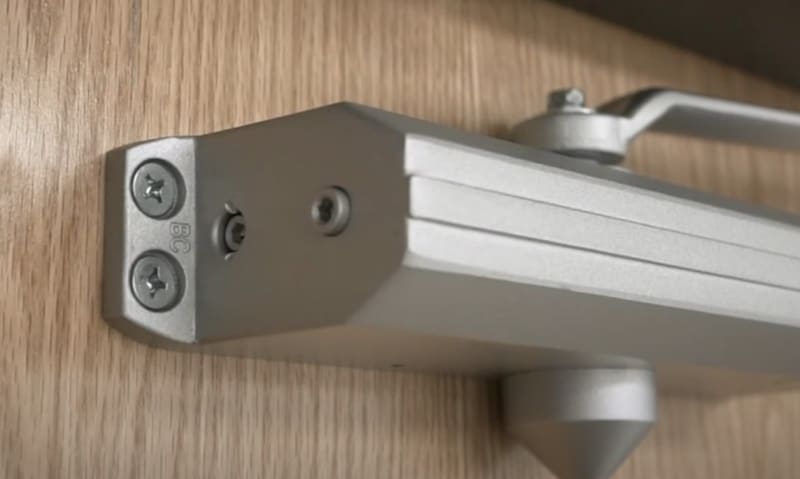
If your hydraulic door closer is making the door hard to open, there could be a few potential causes. Here are some steps you can take to troubleshoot and resolve the issue:
- Adjust the Spring Tension: The hydraulic door closer works using a spring mechanism. If the spring tension is set too high, it will make the door harder to open. Most hydraulic door closers have an adjustment screw to change the spring tension. Try turning this screw to lower the tension and make the door easier to open. Adjust in small increments and test the door after each adjustment.
- Check the Installation: If the door closer is not installed correctly, it could cause the door to be hard to open. Ensure that the closer is installed at the correct height and distance from the hinge and that the arm is correctly attached to the spindle. Consult the installation instructions for your specific door closer model to verify the correct installation.
- Lubricate the door Closer: Over time, the lubricant inside the door closer can degrade, causing the door to become hard to open. If so, you may need to replace the hydraulic fluid inside the door closer. This can be complex, so you may consider hiring a professional or replacing the entire door closer.
- Replace the door Closer: If the door closer is old or damaged, it might be best to replace it altogether. Door closers are not very expensive and are relatively easy to install.
Always check the manufacturer’s instructions for your specific door closer model before making any adjustments or repairs.
Touch n hold door closer problems.
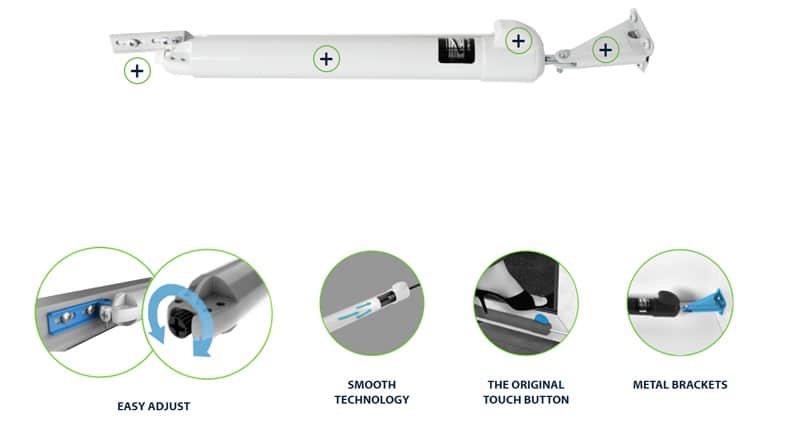
Touch ‘n Hold door closers are a popular brand of door closer that features a unique hold-open function that allows the door to stay open when desired. If you’re having trouble with your Touch ‘n Hold door closer, here are a few common issues and some potential solutions:
- The door closes too fast or slow: You can adjust the door’s closing speed by turning the adjustment screw on the end of the door closer. Turning the screw clockwise will slow the door closer down, while turning it counterclockwise will speed it up.
- Door won’t stay open: The Touch’ n Hold system should keep your door open until you decide to close it. If the door doesn’t stay open, there could be a problem with the hold-open mechanism. You can try resetting the closer by extending it to the hold-open position and releasing it. If that doesn’t work, the closer might need to be replaced.
- The door is hard to open: If the door is hard to open, the spring tension in the closer might be too high. You can adjust the spring tension using the adjustment screw on the end of the closer. Turning the screw counterclockwise will reduce the spring tension, making the door easier to open.
- Closer is leaking fluid: If the closer is leaking fluid, it’s likely that the seals are worn or damaged. In this case, you’ll need to replace the door closer.
- Door Doesn’t Close All the Way: If the door isn’t closing completely, it could be due to an alignment issue, a lack of spring tension, or an obstruction. Check for obstructions and ensure the closer, door, and hinges are properly aligned.
- Door Closer is Noisy: A noisy door closer could be due to a lack of lubrication, loose parts, or wear and tear. Check for any visible signs of wear or damage, and ensure all screws and bolts are properly tightened.
- Touch n Hold door closer is stuck in the open position. Don’t worry; it’s not broken if this is your first installation or you’ve pressed the button for the first time. However, if your door closer appears to be locked open, you can try this remedy:
- Detach the door closer to your door.
- Grasp the cylinder with one hand and the rod with the other hand. A thin screwdriver inserted into the hole at the end of the metal rod can serve as a makeshift handle.
- Pull the two parts apart while simultaneously rotating the rod 180 degrees.
If none of these solutions work, contacting the manufacturer or a professional for further assistance might be best. Always make sure to follow the manufacturer’s instructions when making adjustments to your door closer.
Conclusion
In conclusion, while door closers are designed for durability and longevity, they can sometimes encounter problems. Understanding these potential issues, along with their troubleshooting solutions, is crucial for maintaining the integrity and safety of your doors.


